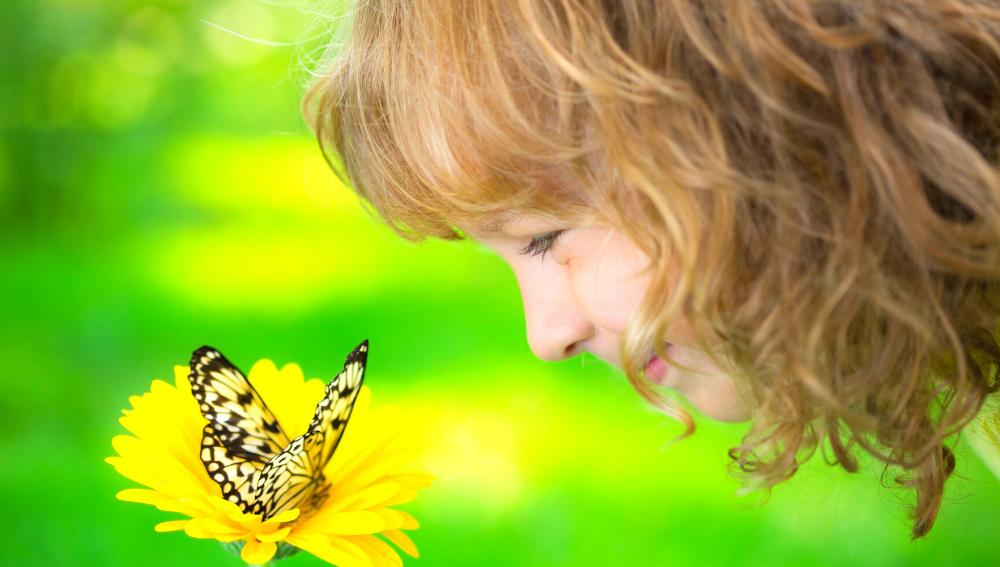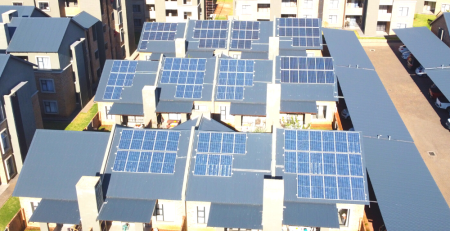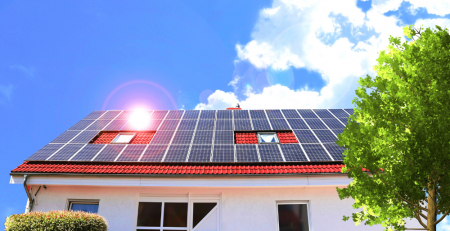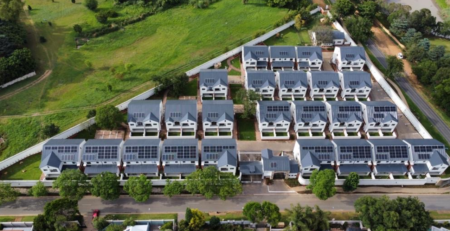6 ways to make your home eco-friendlier this Earth Day without breaking the bank
Earth Day has been celebrated internationally on the 22nd of April every year since 1970, and is a great opportunity to highlight initiatives that inspire action and education to protect the environment and save the planet. The theme this year is “Invest in our Planet”, and one can be forgiven for believing that this is exactly what it would require to create a more earth-friendly home; a substantial capital outlay.
While many of us want to contribute to a more sustainable future and healthy environment, rising fuel prices, inflation and electricity costs have already left us more than a little out of pocket this year. But thankfully, an environmentally responsible lifestyle need not be an expensive exercise, and can even save you money.
Being more caring to the environment also does not require time-consuming, complicated activities, only a few mindful choices of how we conduct our daily routines. Saving the planet can start with all of us making small lifestyle changes within our homes, because after all, in the words of Henry David Thoreau, “What is the use of a house if you haven’t got a tolerable planet to put it on?”
By cutting your carbon footprint you can save your green by going green. For example, celebrating Easter at home this year will go a long way towards not only avoiding carbon emissions due to fossil fuel consumption, but will also help you save on fuel and other costs.
What are some other simple ways to make a difference, that will also save you money, every day of the year?
1. Replace your light bulbs with eco-friendly ones
Traditional incandescent light bulbs that most of us were used to in the past might be inexpensive to buy, but they break easily and use a lot of energy, adding to their costs. They can also contain harmful substances like mercury, and because they typically break within a year, they are also responsible for lots of glass and toxic chemicals in landfills. Fortunately, this outdated technology is being phased out in South Africa.
Halogen light bulbs, light-emitting diodes (LED) and compact fluorescent (CFL) lightbulbs are more energy-efficient than incandescent bulbs and have longer lifespans. Of these three types, Halogen light bulbs are the least energy-efficient.
CFL light bulbs are more energy-efficient than incandescent and halogen bulbs, but less so than LED bulbs. They also don’t last as long as LED bulbs, and may contain mercury, but can typically be recycled. They are estimated to use up to 75% less energy than incandescent bulbs and can last up to 10 years.
Despite being a little more expensive than other types of bulbs, LED light bulbs are currently considered the most eco-friendly bulbs between these options. Considering they can last up to 25 years (or up to 50 000 hours), and consume between 25% to 80% less energy than other lighting options, you can easily make up for their costs on savings. They are also typically made from recycled materials, making them even more eco-friendly.
You can replace your old incandescent lights with more energy-efficient ones when each of them blows, and that way you don’t have to replace all your light bulbs at once.
2. Unplug your electrical appliances when not in use
Electricity demand is one of the strongest correlators to increased carbon footprint and greenhouse gas emissions. More ways to decrease electricity consumption is to turn off the lights when leaving the room and unplug electrical appliances. Appliances like TVs, microwaves, chargers, monitors and computers continue to use electricity while on standby, which typically amounts to hours every day.
3. The big freeze
Cut energy and water use with energy-efficient appliances like those that are ENERGY STAR certified or A-rated on the South African Energy Efficiency Label.
Make sure your fridge is in the shade. A fridge that is standing in the sunlight needs to work harder and use more energy to keep cool. Also, ensure that there is adequate space between the fridge and the wall to allow for adequate airflow – the recommended distance is 7.6cm.
The longer the fridge door is open, the harder it needs to work to stay cool, so decide what you want to take from the fridge before opening the door instead of staring into it – you’ll be surprised about how much energy you can save.
4. Be water-wise
During seasons of heavy rain, we may forget what a precious resource water is. Keep yourself in the habit of using water sparingly.
Being mindful can help save a lot of water and energy in the bathroom. Turn off the tap while washing your face and brushing your teeth to save litres of water every year. Use a cup of warm water to rinse your razor instead of the tap. However much you may enjoy a long hot shower or bath, try to keep it short. Shorter showers and baths not only save water but also uses less energy to heat the water.
Reuse excess water, such as that used for boiling rice or pasta by watering plants after it has cooled down, instead of pouring it down the drain.
And if you’ve ever needed a good excuse to get a dishwasher, here is one; dishwashers are made to use less water than what you might use by handwashing dishes in the sink.
5. Purify the air with plants
Plant any kind of garden to balance out activities that cause emissions. Of course, trees are the top prize, and it is doubtful we can ever have too many, but planting herbs, flowers or vegetables are also good for the environment and healthy, clean air. They also create habitats for pollinators like butterflies, bees and birds. Just ensure that you plant indigenous species that are native to your area.
Greening the inside of your house with houseplants is good to enhance your mood. Plants also purify and improve air quality through photosynthesis.
6. Please, please say no to single-use plastics
You only need to see one heart-breaking photo of a sea turtle suffering from a plastic straw stuck up its nose or a seahorse clinging to an earbud for a clear illustration of what our plastic waste is doing to the environment. Single-use plastics are not only pollutants, but are also responsible for greenhouse gas emissions when they are made and discarded.
Buy or make reusable shopping bags and keep some in your car so you don’t forget them. Not only does buying plastic shopping bags cost money, but plastic is also terrible for the environment. A plastic bag takes more than 20 to 50 years to fully decompose, it contaminates water and soil, and kills thousands of sea and land animals that accidentally ingest it.
Like single-use plastic bags, plastic bottles are also notoriously bad for the environment. At 450 years they take even longer to decompose. Recycle the ones you have at home or repurpose them to put them to good use, as long as they are kept off landfills and the environment. Carry reusable water bottles to avoid buying single-use plastic bottles.
Even if just doing one or two of these things will be a step in the right direction towards reducing your carbon footprint. You might be surprised at what a difference our small actions can make to create a healthier planet – after all, it’s the only one we have.




